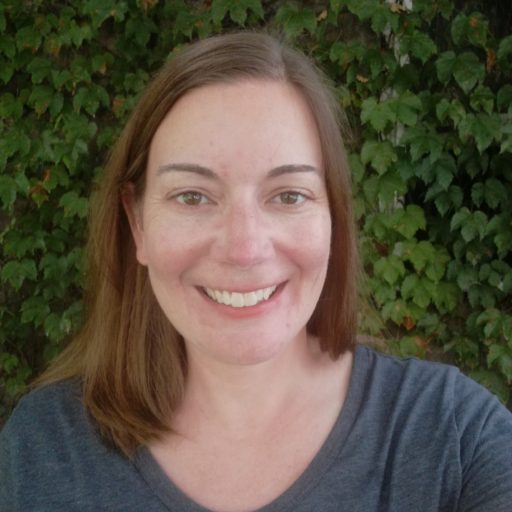Introduction
Collaboration can help teachers think critically about their pedagogy and inspire new ideas. In larger schools, it is often possible to collaborate with someone who is teaching the same class, or at least the same subject. In a small school, though, someone might be the only teacher in a particular area. For a specialized content area like physics, collaboration with other teachers in the science department can be rewarding, but there’s still an unpassable divide due to not sharing field specific pedagogical dilemmas.
Both of us are the only physics teachers at our respective schools. Marna is a ninth grade physics and engineering teacher at the Dearborn STEM Academy, a small 6–12 school in the Boston Public Schools (BPS), and Shannon is a physics and chemistry teacher at Abbott Lawrence Academy in Lawrence, Massachusetts. We previously worked together at a larger BPS school, where we developed a close working relationship, and found ourselves struggling to get the type of feedback and inspiration that is often only possible from someone teaching the same content. In our new positions, we were both grappling with new state science standards that required students to master engineering skills and rigorous computational thinking while contending with the pressures of the high-stakes physics exam all of our students take at the end of the year.
We each needed a thought partner who would help us develop lessons and projects that would meet the content standards while also helping students develop the skills laid out by the Next Generation Science Standards. In order to meet these needs, we started to meet regularly to collaborate on developing new projects and activities. This self-designed professional development (PD) gave us agency in our own learning. We felt supported in taking risks that would lead to improving our practice and student learning. It was an empowering experience that we recommend to other educators.
What We Did Together
We started collaborating near the end of the school year by comparing the scope and sequence each of us planned to use for the coming school year. We had ideas for projects and activities that we wanted to investigate together and decided to schedule monthly meetings starting in the summer. Our meetings consisted of a mix of developing new activities and reflecting on lessons we had previously completed. We also spent time at each meeting reviewing classroom data and thinking about successes and areas for improvement for each activity.
In the summer and fall, we developed a low-budget cardboard pinball machine project based on a purchased pinball machine kit that one of Marna’s students assembled the previous school year (Figure 1). This engineering project incorporated ideas from our initial forces unit in physics class. The baseline project students built was very similar in both classrooms, but we were able to adapt the project setup to the needs of students in each classroom. Shannon included two whole-class investigations about spring constants and friction, while Marna incorporated a set of student-chosen science fair investigations about the forces in rubber bands, angles of ramp elevation, and friction on different surfaces.
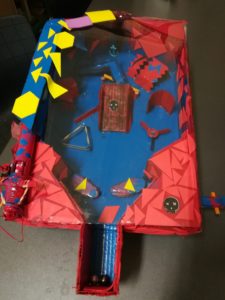
Figure 1. A cardboard pinball machine constructed by a student. Photo Credit: Marna Eckels
In another meeting, we worked on building a speaker for an engineering project based on electromagnetism and sound. During our meeting, we made several attempts to construct a working speaker but were not able to create something functional. Though this project did not make it to our students, it was still productive to try it out with a thought partner. It was originally a project we hoped would increase student understanding of wave behavior, but we agreed that student learning would be hampered by difficulties in creating the device and our end goal would be lost in student frustration. Having another teacher agree that this project would not be the best use of class time helped us let go of the idea and move on to other activities.
Shannon did an electric art project with her students the previous year (Figure 2), and Marna wanted to try it with her classes. We spent time looking at Shannon’s documents and photos of her students’ work, and Marna asked questions about materials and thought about how to adapt the project to meet her students’ needs.
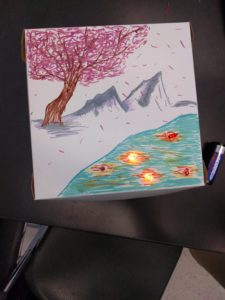
Figure 2. A student prototype of their electric art project completed in a small cardboard box (above) and a final project completed on a canvas with lights not yet installed (below). Photo Credit: Shannon Morey

We also worked on other electricity ideas, including building a set of mystery circuit boxes with hidden wiring connecting exposed bulbs in different combinations of series or parallel connections (Figure 3). Marna ended up building a set of large-scale circuits to use as a class demonstration for students to discuss and write about in pairs, and Shannon used a smaller-scale version in a station activity.
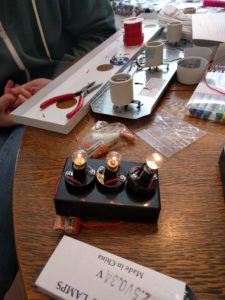
Figure 3. Testing a mystery circuit during one of our meetings. Photo Credit: Shannon Morey
We prototyped various smaller activities throughout the year, including:
• an exploration of universal gravitation based on images and graphs,
• a set of activities about computational thinking using Ozobot robots to illustrate physics concepts, and
• a device called GravityLight that converts gravitational potential energy into light intended for places without reliable electric service (Figure 4).
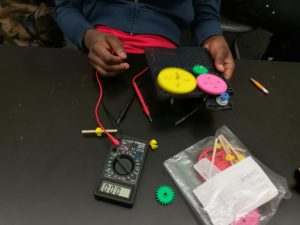
Figure 4. A student working to create their own GravityLight. Photo Credit: Marna Eckels
Shannon’s Story: Building Cultures of Risk-Taking
While I am interested in new projects or lesson ideas, I often need a nudge to get me to try it. Marna was always that nudge for me this year.
At first I thought, “Cardboard pinball machines sound interesting, but how will I integrate them well into my curriculum? Will students see the connections between their projects and the science content I want them to learn?”
With Marna’s enthusiasm and our mutual backgrounds and interest in engineering design, I pushed ahead and didn’t regret it. My students developed an intuitive sense of spring constants and why they are important in real-life situations. They also saw the applications of Newton’s Three Laws of Motion in the context of their own creations. It was a powerful experience at the beginning of the year; one my students are still talking about.
There were missteps and things I would do differently in the future, but I am happy I took those risks and now that I grew as a teacher because of them.
Throughout the year I took other risks, from designing collaborative tasks that pushed my students’ computational thinking to utilizing new reading materials that connected our content to other areas of science like marine biology. I always trusted Marna’s ideas, and Marna helped me to trust some of my risky ideas, too. There were missteps and things I would do differently in the future, but I am happy I took those risks and know that I grew as a teacher because of them.
The projects and lessons Marna and I developed together helped my students to take more risks themselves. Engineering design projects inspire student creativity, and the prototyping process allows them to try something out in a low-stakes environment. That attitude can carry over to other activities and projects. Working collaboratively from the beginning of the year on projects where all students had a way to shine helped build a positive classroom community. As I implemented new and challenging computational tasks later in the school year, the culture of risk taking and support within groups paid off in terms of student learning.
Marna’s Story: How Collaboration Can Decrease Frustration and Increase Reflection
Like Shannon, I often have risky ideas that might work with my physics curriculum, but it usually takes real work to shape them so that they are tightly aligned with our state’s standards and are accessible for my beginning English language learner students. If it’s an engineering project, it always takes some hands-on tinkering to make sure the actual materials I’m planning to provide in class will work. That work of prototyping the project can be a frustrating task if taken on alone.
Having regular meetings with Shannon to try different materials and build that initial project prototype helped make more projects a reality in my class this year. Instead of struggling to devise an easy-to-build marble launcher on my own, Shannon and I worked something out together, bouncing ideas (and marbles) back and forth. In some cases, like the homemade speaker project, working with Shannon helped me give up on a project that just wasn’t working with the materials we had. If I had been developing that project on my own, I would have probably spent much more time fiddling with the wires and magnets before deciding it wasn’t the right project for this year.
Working with Shannon also helped me to be more reflective about how these projects went in my class. We would debrief the activities by text or email, sharing pictures of our students’ work and discussing our challenges and successes at our next meeting, with an eye for what to try differently next year. In one case, I even took this idea of debriefing a project with another teacher directly to my students. I explained to my class that I talked with a physics teacher from another school about the project they just completed, and that she might try a similar project with her students in the future. My students wrote letters to Shannon with advice about the project, including diagrams and explanations of what worked and what was frustrating for them. This gave students a genuine audience, and required them to write with a level of precision and detail beyond what is required when they are writing in their notebooks for my class.
Our Advice
For teachers interested in collaborating this way, we recommend developing a timeline. Consider when you will try out certain ideas and when you will debrief lessons or projects you have completed. We found that the general timeline we developed at the beginning of the collaboration helped us focus each meeting and gave us something specific to work on. Flexibility is also important. Some of our best ideas were the result of thinking about another project or connections we made after we developed our initial timeline. Communication was also key. Between meetings we sent each other multiple emails in order to plan. The meetings themselves were held at our own houses. As we live about 45 minutes away from each other, we typically alternated between the two to share the burden of travel.
Designing your own professional development experience with a close colleague is empowering. Both of us have often felt that PD sessions we have attended were not designed with our needs or our students’ needs in mind. As this PD was designed by us, it focused on the exact needs we had at any given moment. In addition to being responsive, our collaboration was inspiring. Both of us looked forward to our meetings and they provided an opportunity for us to try projects we wouldn’t have tried if we didn’t have someone else cheerleading for us. Our meetings also gave us a reason to reach out and ask each other about the specifics of an upcoming lesson or project. We knew we had someone within our content area who was interested in what we were doing and would provide valuable feedback. Teaching can be a lonely profession, and this type of collaborative professional development can provide support for fighting that isolation.
Shannon Morey, a 2015 Knowles Teaching Fellow, is a physics and chemistry teacher at Abbott Lawrence Academy in Lawrence, Massachusetts, where she previously taught robotics and coding. Before starting at Abbott, Shannon worked as a physics and chemistry teacher at East Boston High School. She is a member of the leadership team for ComSciCon, a national workshop for graduate students interested in science communication. She is also the director of education for BiteScis, an organization that generates lesson plans that integrate current science research by creating teacher-graduate student partnerships. Reach Shannon at shannon.morey@knowlesteachers.org.
Marna Eckels is a physics and engineering teacher at Dearborn STEM Academy in Boston, Massachusetts. Before becoming a teacher, she worked as an electrical engineer and software test engineer on technical projects including an implantable artificial heart, satellite communication systems, and airfare search engines. She loves seeing her students build creative projects; they use lots of hot glue and electrical tape in the process. Contact Marna at meckels@bostonpublicschools.org.






